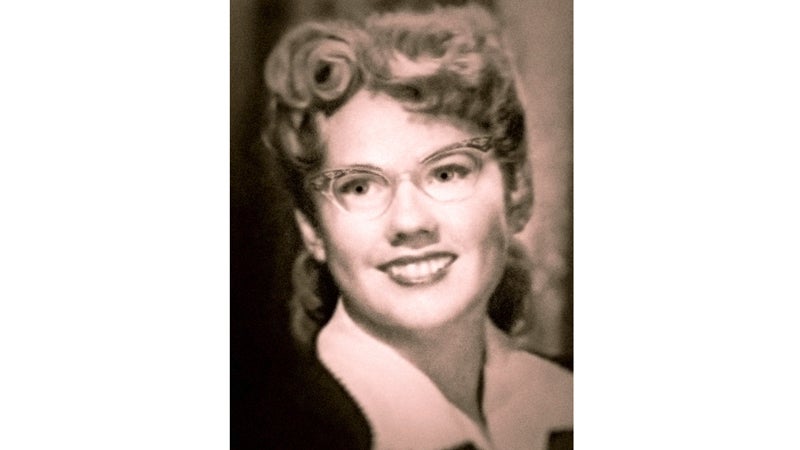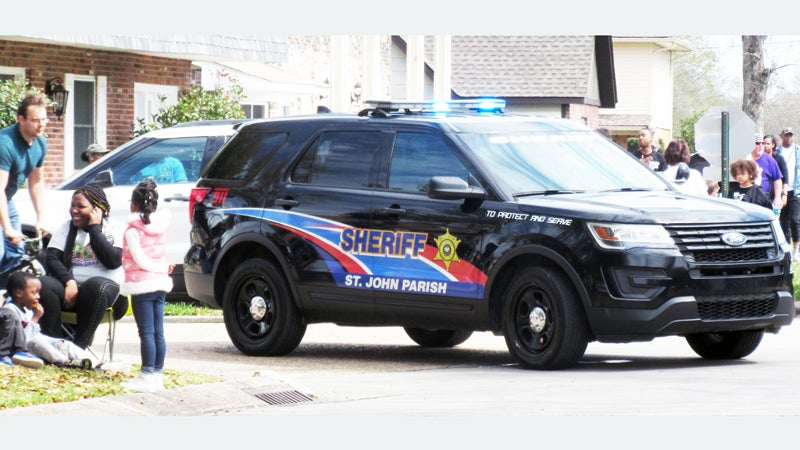What really happened to Audrey Moate? (Part 4 of 5): Evidence suggests Audrey Moate lived
Published 8:18 am Wednesday, August 26, 2020

- Audrey Moate of Baton Rouge disappeared in St. John the Baptist Parish in November 1956. The case has never been solved.
|
Getting your Trinity Audio player ready...
|
[The following is the fourth installment in a five-part series of a true crime story that happened in St. John the Baptist Parish in 1956. The first part appeared on Aug. 5 and continues each Wednesday. It is the continuing story the murder of Thomas Hotard and the disappearance of Audrey Moate. Moate left behind a trail of footprints and a decades-long cold case that brought St. John Parish national attention when it aired in a 1989 episode of Unsolved Mysteries. L’OBSERVATEUR will run part of the series every Wednesday.
An interview with author HL Arledge can be found on lobservateur.com and in the Aug. 1 e-edition. The author’s contact information is listed at the bottom of the story.]
BY HL ARLEDGE
bayoujustice@hammondstar.com
Just after 4 in the afternoon, Thursday, December 6, 1956, Audrey Moate’s former mother-in-law answered the telephone in her New Orleans apartment. The voice on the other end said, “Mom, this is Audrey. I’m in very bad trouble, and I need help.”
Mrs. Norma “Mary” O’Reilly Moate later told police her former daughter-in-law’s accent was unmistakable and that Audrey always called her Mom.
One week earlier, the Associated Press reported:
“St. John the Baptist Parish Sheriff Percy Hebert said today he is beginning to believe Audrey Moate of Baton Rouge may be alive.
“Born Alta Audrey Smith, the divorcee has been missing since November 24, 1956, when she left her mother’s home at 2621 McGrath here in Baton Rouge for work at a plant in Gramercy.
“Some 200 Louisiana National Guardsmen searched swamplands near LaPlace this week, but failed to find a trace of the woman, a 31-year-old mother of three.
“Her identification and clothing were found last Sunday inside and around the car of an Algiers engineer, 40-year-old Thomas Adolph Hotard Sr., shot to death in his auto, parked 30 miles from New Orleans.
“Sheriff Hebert said Mrs. Moate may have escaped from the killer but is afraid to come forward, thinking the investigators have implicated her.”
When the call came into Mary Moate’s home at 923 Philip street, Mary replied, “Where are you, Audrey?”
The caller responded with a click followed by a dial tone.
“We were always close,” Mary told reporters the next day, “But I believe the real reason she called me was that she wasn’t on her house phone. She would have called her mother in Baton Rouge, but she wasn’t on a payphone either, and you just can’t borrow someone’s phone to call long distance.”
In Baton Rouge, Audrey’s mother, Minnie Pearl Cook Smith, told reporters she was sure the call was not the work of a prankster. “Mom was a pet name used by my daughter when talking to Mrs. Moate.”
Minnie Smith, with tears in her eyes, said that Mary Moate certainly would have recognized her former daughter-in-law’s voice.
Minnie said she expected Audrey to contact her shortly. She said she was sure the reason her daughter hadn’t called until now was that she did not have the money to make a long-distance call from the city.
“She’ll call soon,” Minnie said, “She must call. I have her baby.”
The child she referred to was Audrey’s 1-year-old daughter, Jacqueline.
Minnie told reporters that Audrey had adopted the infant while undergoing treatment at a mental health facility in St. Louis, Missouri. However, police discovered that Audrey lived within walking distance of her mother, at 758 Napoleon Street in Baton Rouge, during the period she allegedly resided in Missouri.
In Audrey’s car, sheriff’s deputies found bills for the maternity ward and doctor that delivered Jacqueline. Audrey rented the apartment and checked into the Baton Rouge hospital, using the same name, Audrey A. Hotard.
Before Jacqueline, Audrey had two other children, Deckey Lee Moate, a 9-year-old girl, and George Howard Moate, her 7-year-old son. Both were living with the senior George Moate’s mother when Mary Moate received the mysterious telephone call.
George, Sr., who had divorced Audrey and remarried two years earlier, told investigators, “Audrey is very smart; you might even say brilliant, so I wouldn’t be a bit surprised if she’s not out there somewhere.”
Tracing the call George’s mother received to a neighborhood near the New Orleans French Quarter, Detectives John Dreyer and James Alphonse formed a 20-man team and searched the area door-to-door, carrying photos of Audrey.
Interviewed by Detective Alphonse, two waitresses at the Café Du Monde on Decatur Street described a haggard and disheveled customer matching Audrey’s description who entered their shop the night before the call to Mary Moate.
“She came in here Wednesday night, sat at the counter, and ordered donuts with coffee,” one waitress said.
As she swallowed her first sip of coffee, the waitress who had served her pointed the other to a newspaper photo. Noticing this, the patron resembling Audrey slid some money across the counter and left without finishing her food.
Ultimately, detectives interviewed a housewife who positively identified a photograph of Audrey Moate as a woman who came to her home and asked about renting a room.
Mrs. Marie McKay of 1419 Tersichore street in New Orleans identified a photo of Audrey Moate as the same woman who appeared at her home Thursday afternoon asking about a room to rent and to use her telephone.
“She didn’t have glasses on,” Marie told Detective Dreyer, “But you could see marks where she had worn them. We could tell she had recently cut and dyed her hair. A reddish tint, not blonde like the photo.”
Mrs. McKay said the woman stayed to eat dinner with her and her husband, Walter McKay. She said the woman gave a name that sounded like Mrs. Moate or Mrs. Moore and mentioned her mother living in Baton Rouge.
In the days that followed, Sheriff Hebert’s office received countless letters written by persons claiming to know details of the murder-disappearance. All were anonymous but carefully checked out. A handwriting expert compared the writing in the letters to writing samples among Mrs. Moate’s personal effects.
All tests returned negative or inconclusive.
By year’s end, Sheriff Hebert received a report from “a responsible person,” describing a man and a woman resembling Audrey, seen leaving Frenier Beach near the time that Coroner Remy Gross believed Tom Hotard died.
“This was a shadowy lead,” the sheriff said, “But it was checked out at all the landing and launching spots on the lengthy shoreline of the lake.”
The search proved fruitless and caused some speculation that perhaps Audrey had aided in the slaying and escaped with another man on the lake. But Sheriff Hebert told reporters he did not believe this as Audrey Moate had no apparent motive for killing Hotard.
The sheriff also pointed out that a savings account of Audrey’s remained untouched, and a payroll check Audrey collected the Friday before meeting Hotard—although missing—had remained uncashed. He said the footprints and articles of her clothing found at the death scene also supported her innocence.
Sheriff Hebert asked officials at Audrey’s bank to allow inspection of the articles in her safety deposit box. Bank officials were adamant in their refusal, telling Sheriff Hebert that he would wait out the seven-year limit required for the presumption of death before entering the safety deposit box.
Seven years later, the court awarded the safety deposit box to Audrey’s daughter, Deckey Lee Moate. It contained only the birth certificate of Jacqueline Eileen Moate, the daughter of Audrey Moate and Thomas Adolph Hotard.
As the years passed, Sheriff Hebert averaged two or three trips a year to distant cities, including Los Angeles, Chicago and Detroit, where tipsters claimed to see Audrey alive.
Shortly after the call came for George Moate’s mother, Audrey’s mother, Minnie Smith, went to live with her sister, Mrs. Agnes Sutherland, in Coquille, Oregon. Minnie called newspaper reporters before moving, asking them to report her new address “for when Audrey came back looking for her.”
Minnie took Jacqueline to Ojai, California, to be adopted by relatives. The baby grew up as Jacqueline Eileen Gustafson, the daughter of Audrey’s first cousin, John Henry “Jack” Gustafson and his wife, Joyce Eileen Bunton Gustafson.
On March 14, 1959, two and a half years after the disappearance of Audrey Moate and the murder of Tom Hotard, in the clearing where Hotard died at the end of old Frenier Road, Mrs. Frank A. Martinez sat in the family car while her husband fished a short distance away.
As she sat, knitting a pair of gloves, a man crept behind her, pressed a gun against the car window, and fired.
“Bayou Justice” is a weekly true crime column featuring exciting or notable crime-related stories often focusing on cold case files in South Louisiana; stories based on interviews with key players, among them: police investigators, lawyers, victims, and their families. If you have information regarding this case or another unsolved crime, contact Crime Stoppers or your local police agency, or email bayoujustice@hammondstar.com.





